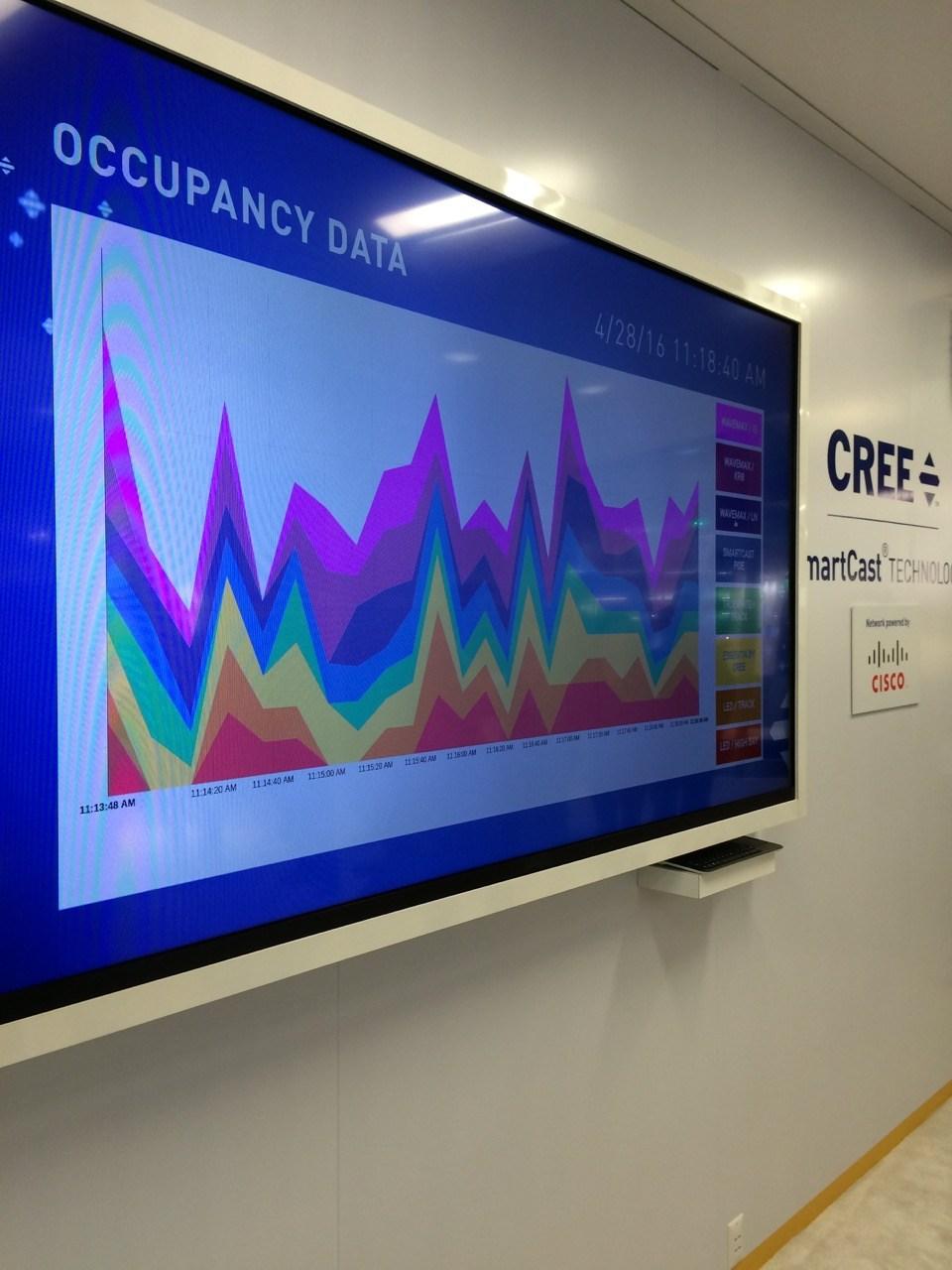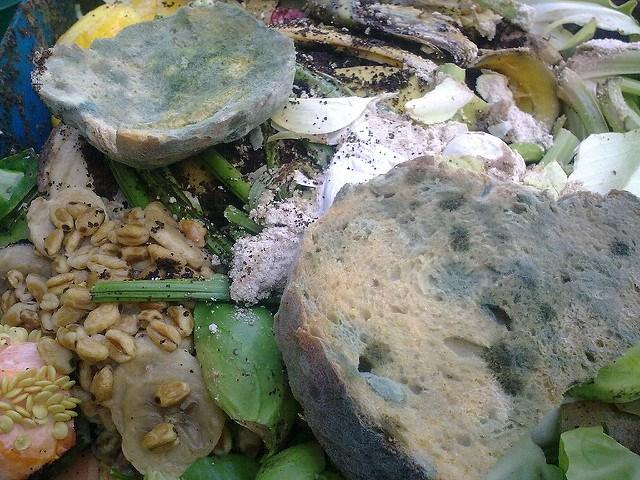Rwanda, Mexico Seek to Make Coffee the World's Most Sustainable Product


Nearly 9,000 miles apart, Rwanda and Mexico are the first countries to join the Sustainable Coffee Challenge -- which aims to increase the demand for sustainable coffee. Representatives from both countries joined with Conservation International (CI) at European Development Days to announce their partnership in the challenge.
CI launched the challenge back in December at the U.N. climate negotiations in Paris. It was intended as a call-to-action for the sector to make coffee the world’s first entirely sustainable agricultural product. Starbucks came aboard as the first partner. A total of 18 partners signed on by the time the challenge launched at COP21. The number is now up to 48, including the Specialty Coffee Association of America (SCAA), Ceres, Fairtrade America and Keurig Green Mountain.
The challenge brings partners together from the coffee industry, conservation, agricultural development and governments to increase the demand for sustainable coffee. While almost half of the global coffee supply is produced according to a sustainability standard, only 12 percent is sold in the market as sustainable coffee. The partners will create commitments for the various parts of the coffee sector.
Rwanda’s commitments include efforts to increase the production and yield per coffee tree, improve soil fertility, strengthen farmer organizations, and improve traceability in the value chain. Mexico’s commitments include improving farm productivity and providing access to credit programs.
There are three main ways that participants are encouraged to contribute:
- Commit to publicly stating and reporting their goals.
- Join a working group to help shape the challenge.
- Participate in commitment networks with other participants to share experience and encourage additional action.
Coffee in Rwanda is a “critically important commercial crop,” said Ambassador Bill Kayonga, CEO of Rwanda's National Agricultural Export Development Board (NAEB), in a statement. There are over 355,000 smallholder farm families in Rwanda that depend on coffee to make a living. “We have an obligation to these farmers, their lands and the economy of our country to ensure the continued sustainability of the industry,” Kayona said.
Coffee is also an import crop in Mexico, with an estimated production of 2.35 million bags of coffee a year. As in Rwanda, most of the coffee is grown by smallholder farmers, almost 500,000. And like Rwandan coffee farmers, Mexican coffee farmers depend on coffee production to make a living. “We believe that by publicly stating our commitment to work with our farmers to ensure sustainable practices that increase productivity and enhance their livelihood, while also minimizing the impact on the ecosystem, we can help set an example of how to elevate positive outcomes across all coffee producing regions,” said Santiago Arguello, director of coordination for Mexico's Integrated Plan for the Care of Coffee.
Making coffee the first sustainable agricultural product is a lofty goal, but it is one that is badly needed as coffee production is already feeling the effects of climate change. Consumer demand for coffee increases, with 600 billion cups being consumed annually, and the coffee industry is a $22 billion business. However, the coffee industry is being affected by changing weather patterns, warming temperatures and drought. Warming temperatures have increased the coffee berry borer, which grazes on coffee plants. The fungus called coffee rust thrives in warmer temperatures and can devastate coffee crops. Three of the top 15 coffee-producing nations in the world (Costa Rica, India and Ethiopia) have all seen a great decline in yields.
The coffee industry can help combat climate change by encouraging sustainable farming practices. This could provide over 30 percent of the carbon sequestration and storage needed to keep global temperature rise to a safe level, according to CI. And the challenge has the potential to be a catalyst for the coffee industry to help reduce the world’s carbon emissions.
Image credit: Flickr/jen
Leave Spreadsheets Behind and Overcome Reporting Fatigue


By Maya Yarowsky and Noam Gressel
Sustainability reporting is an important tool for companies to reflect their internal growth and innovative progress. Companies small and large have different ways of organizing corporate social responsibility (CSR) data, be it through EHS (environment health and safety), compliance or supply chain management divisions, or integrated sustainability leadership. Yet one of the major barriers to establishing an effective strategy is the ubiquitous use of spreadsheets to compile information.
According to a recent ReScore Group survey of 56 global corporations in a variety of industries, up to 34 percent of the of respondents that use spreadsheets were ‘unsatisfied’ or ‘very unsatisfied’ with their current methods. (Spreadsheet users accounted for 36 percent of total respondents.) This is opposed to 100 percent satisfaction by the 15 percent of respondents that use specialized sustainability reporting tools. Here are just a few of the common pain points expressed by spreadsheet users:
- Spreadsheets work for monitoring and collecting data for one to two operational sites, but once there is a larger organizational web, it becomes a challenge to continuously update and aggregate spreadsheets from multiple sites.
- The one-off nature of spreadsheet data management makes it difficult to identify performance patterns, set automated alerts and glean the company’s overarching sustainability message.
- Lacking a concentrated database of environmental and CSR data, companies are faced with growing bureaucratic burdens, as more investors, analysts, customers and industry organizations request information according to different questionnaires, protocols and guidelines. With spreadsheets, each of these tasks becomes a separate effort, together creating a reporting nightmare.
- Companies carrying out a full audit often find that they are missing key pieces of data and supporting documentation and have trouble locating them amidst mounds of separate files.
- While spreadsheets are a commonly used organizational tool, they lack tailored programming that removes the professional complexities of environmental and CSR reporting.
- Releasing your information to investors, regulators or the public requires additional consulting, auditing and design efforts that repeat themselves.
So, if spreadsheets are causing reporting fatigue, why then aren’t we seeing an explosive demand for specialized sustainability reporting tools? It’s because the vast majority of sustainability software solutions adhere to an outdated architecture that requires burdensome customization, training and investment, topped off with a prohibitive pricing model. With the current demand for sustainability disclosure, the industry begs disruption in the form of intuitive and inexpensive software-as-a-service (SaaS).
The good news is that a number of disruptive initiatives have emerged: CSRHub serves the investment community with SaaS solutions; Measurabl is tackling the real-estate market; and ecoOS has launched cost and clutter-cutting solutions for manufacturing industries. As these solutions are vetted by a wider user base, the sustainability community is expected to desert the vicious cycle of low-value reporting and enter a new era of sustainability-driven strategy and business value creation.
Image credit: Pexels
Noam Gressel is founder and CEO of ecoOS.
Maya Yarowsky is pursuing her Masters in Environmental Studies at Tel Aviv University and is a Marketing & Business Development Intern at ecoOS.
Tech can have a huge impact in reducing carbon emissions: BT report


by RP Siegel — We hear a lot about smart technology these days: smart cars, smart cities, smart grid, etc., with an implied promise that these smart things will be far more efficient than their less gifted predecessors, thereby allowing us to reduce carbon emissions. Of course, those claims are generally being made by those selling the smart things, so then it’s fair to ask, how much of this is simply hype?
While the British telecommunications giant BT, is not exactly an objective source, their recent report, entitled, “The role of ICT in reducing carbon emissions in the EU,” takes an in-depth look at the opportunities being offered and then projects those savings forward. The results are certainly impressive. While technology alone cannot solve the problem, it can play a significant role, though clearly there will be commitments and investments required to realize this potential.
The report builds on the SMARTer 2030 report produced by GeSI with Accenture, which showed that globally, ICT could potentially hold 2030 emissions at 2015 levels. This report looks specifically at the EU, which is further along the path than many other places, has more resources, and perhaps commitment as well to allow it to go further.
According to the report, information and communications technology, or ICT, can potentially save 1.5 GT of CO2e in the year 2030. That’s fully 2.7 times greater than the full carbon emissions of the UK in 2012, and 37% of the EU’s 2012 emissions. Of course, we know that all those server farms and cell towers use a lot of energy themselves, but according to the report, the ICT emissions overhead is only about 5.3%.
Just over half of those savings will be from various forms of energy efficiency, including but not limited to “letting your fingers do the walking.” Another 20% will come from renewables. At stake is $757 billion (£525bn, €675bn)in additional revenues and $718 billion (£498bn, €640bn) in cost savings. The report makes no mention of the level of investment required to achieve this level of ICT penetration, though, given the size of the opportunity, it is suggested that companies will want to invest in this in their own self-interest.
The report breaks down the opportunities into eight contributing sectors (in order of contribution): Manufacturing, Energy, Buildings, Mobility & Logistics, Food, Work & Business, Health, and Learning.
Manufacturing alone represent 31% of the opportunity. When combined with Energy and Buildings, that accounts for almost 75%; Mobility and Food bring it up to 92%. Those are clearly the areas of greatest opportunity.
Here are some examples. In manufacturing, the emphasis will be on reducing waste, increased automation and process optimization. The circular economy will play a big role here with each plant well-connected to their supply chain. For instance, Jaguar’s REALCAR initiative aims to use 75% recycled aluminum mostly from press shop scrap from their own suppliers.
In buildings, improved controls and connected sensors will substantially reduce energy waste in heating, cooling and lighting. Integration of thermal storage and other demand reduction measures will save energy throughout the system.
In energy, predictive analytics will help utilities match supply with demand. That will in turn allow them to optimize the use of renewables. On the demand side, smart appliances and commercial equipment will help “shave the peaks” in demand which tend to be so costly and inefficient to utilities to keep up with.
In mobility, traffic flow (think smart traffic lights) and parking solutions (like the one being developed in Milton Keynes) will keep traffic moving efficiently and smoothly. Mobile apps will facilitate the use of alternative of modes of transport, ranging from walking to biking, to ride-sharing services and more conventional forms of public transportation. Virtually all of these will be cleaner than today’s primary options.
Of course, little of this will happen unless people appreciate the value and ask for it. That includes everyone from consumers, to business leaders to government representatives.
Specifically, the report, which was written with companies in mind, says, “companies should focus on viewing ICT as an enabler across their value chain, and look to understand, in detail, how ICT can help them to reduce emissions through greater energy efficiency, use of renewables, or operational improvements. Cross-sector collaboration, between ICT and non-ICT companies, will help organisations understand the value and potential of ICT within and across their value chains and operations. This collaboration will be critical in driving the greatest benefits of adoption.”
Zipcar adds Volkswagen Golf GTE to its London fleet


by Antonio Pasolini — The London car club scene is about to become greener as car-sharing company Zipcar increases its offer of emissions-free driving. The company has partnered with Westminster City Council and Volkswagen UK to offer sustainable, hybrid electric vehicles at an affordable hourly rate.
Through the agreement, 50 Volkswagen Golf GTE plug-in hybrid electric cars are already available to Zipcar members. Forty of the cars are in the Westminster area; ten other vehicles are in other locations such as Tower Bridge and Old Oak. To support the initiative, Westminster City Council has installed new charging infrastructure in 40 of their car club parking bays.
The move is part of London’s Car Club Strategy announced last May, involving Councils, GLA (Greater London Authority) and TfL (Transport for London). The plan is to convert 50% of car-share fleets to electric vehicles by 2025.
Consumer demand is increasing, too. Recent research shows 10 percent of car club costumers have used an electric vehicle, up from four percent in 2014/15, according to the latest Carplus Annual Survey of Car Clubs.
It is also a response to local concerns over air pollution, which has led Westminster Council to bid for funds to create a Low Emission Neighbourhood in Marylebone. The Council has also dispatched parking marshals it calls ‘air force’ to educate people about the environmental impact of engine idling.
Besides being greener, the Volkswagen Golf GTE offers the same technological edge of a petrol Golf, so drivers familiar with the latter will have no problem adjusting. When started, the GTE will automatically default to electric vehicle mode.
The 50 cars in the scheme also support Apple’s CarPlay and Android Auto so drivers can enjoy features such as maps or music through the GTE’s in-built display.
Last but not least, customers will not pay a premium to go green. Hiring a Volkswagen Golf GTE will cost the same hourly rate of £7 as a petrol Golf.
Image credit: Zipcar
Congress Strengthens Toxic Substances Control Act in Rare Bipartisan, Pro-Environment Move


According to the nonprofit Environmental Defense Fund (EDF), the bill, which passed the Senate and is expected to be signed into law by President Barack Obama soon, is the first major environmental legislation in over two decades.
The bill passed with bipartisan support, championed by Democratic Sen. Tom Udall (N.M.) and Republican David Vitter (La.). The former is a recognized environmental champion. The latter? A major surprise, as Sen. Vitter is a member of a party which has, too often, allowed empty rhetoric and special interests to dominate over science. One of his colleagues brought a snowball in the Senate chambers, as a prop to ignore climate change.
The key thing that this bill does is allow regulators access to information needed to ensure the safety of products in commerce, while also being able to safeguard confidential business information. It also empowers the Environmental Protection Agency, which strongly supported the bill, to better evaluate, manage and assess risk-associated chemicals in our market. It even sets time-bound deadlines for the EPA to take action.
This is important, because we live in a world where over 90 percent of manufactured goods include at least one chemical. Forty years ago, when the Toxic Substances Control Act was first passed, this was not the case, which is one reason why the outdated bill was in dire need of updating. This law has the potential to have a real impact in making our environmental cleaner.
Perhaps one reason the bill passed with such diverse, bipartisan support is that it was supported not only by environmental nonprofits like EDF, but by many in the business community as well, who understand that clear, safe regulations can actually benefit them too.
“This legislation will offer the kind of predictability, consistency and certainty that manufacturers and the national marketplace need, while also strengthening oversight and providing consumers with more confidence in the safety of chemicals,” said Cal Dooley, president and CEO of the American Chemistry Council, in a press statement.
The bill was named in honor of former New Jersey Sen. Frank R. Lautenberg, who spearheaded its progress in the Senate up until he passed away in 2013. While passing such an important bill is a major step, all is not said and done, of course, because now comes the hard part – making the law work and ensuring our environment is free of deadly chemicals.
“Implementing the new law will take the same level of hard work and dedication it’s taken to get us to this point – and that will be a real challenge in an area fraught with contention and conflict,” said Richard Denison, a lead senior scientist at EDF, in a blog post.
Still, the EPA now has a new tool in its arsenal to protect us from dangerous chemicals. Let's also hope that this also becomes a blueprint for how Republicans and Democrats can come together on environmental issues. Because I hear there's this really big challenge, climate change, that could use some major Congressional action (and a majority of Republicans agree).
Image credit: Lynn Betts via Wikimedia Commons
Mileage Cheating Scandal to Cost Mitsubishi $600 Million


Mitsubishi Motors recently announced that it will reimburse owners of four of its kei car (or mini-vehicle) models in the wake of an investigation by Japanese transportation authorities that revealed the company had exaggerated those cars’ mileage readings. As many as 600,000 owners of the four vehicle models -- which include the eK Wagon and eK Space, as well as the Nissan-branded Dayz and Dayz Roox -- will be compensated 100,000 Japanese yen, or about $960, Reuters reported on Friday. The company estimates that the total cost of these refunds to owners affected by the automaker’s mileage scandal will soar as high as $600 million.
Meanwhile, the company suspended sales of those four models since the scandal hit the newswires in April. The models under investigation all had 660cc engines, long a preferred motor in Japan because of the country’s extreme urban density; in turn, the country’s government has long offered rebates in order to encourage steady sales.
Unlike the Volkswagen emissions scandal, which was widespread and resulted in that company subjected to various lawsuits around the world, Mitsubishi’s struggles are localized within Japan. Nevertheless, revelations of the rigged mileage data were devastating for the company, which was already struggling to rebuild consumer trust. During the early 2000s, Mitsubishi was forced to disclose a long history of covering up defects including faulty brakes, clutches and fuel tanks.
The result of yet another scandal is a company that now carries an even weaker reputation within and beyond Japan when compared to domestic competitors Nissan, Toyota, Honda, Mazda, Subaru and Suzuki. Earlier this month, the Wall Street Journal reported that Mitsubishi had to write off a 50 billion yen ($480 million) charge as the company disclosed as many as 20 models in total may have been sold with altered mileage data. The company’s stock and sales had cratered to the point at which the automaker needed an infusion of cash. Last month, Mitsubishi entered into an alliance with Nissan, which agreed to pay $2.2 billion for a 34 percent stake in Japan’s sixth-largest automaker.
Despite Mitsubishi’s claim that it is committed to a full investigation of the mileage cheating fiasco, the company’s long-term prospects are bleak. Shortly before investigations revealed that the company was manipulating such data, Mitsubishi announced that its financials for the previous fiscal year had taken a large hit. Furthermore, the automobile market in Japan is now proving to be unkind to Mitsubishi and its competitors, with or without any scandals.
Seen as a way to boost mobility and industrial capacity, Japan’s government encouraged its companies and citizens to make the kei car their purchase of choice. But there is an ongoing argument that a focus on these small cars has come at the expense of Japan’s potential to export larger, and therefore more lucrative, automobiles. To that end, taxes on small cars were increased to wean the Japanese away from these cars and to encourage the scope and scale of larger vehicles that can be sold abroad. The 50 percent spike in these small cars’ taxes, implemented this spring, led to a recent decline in their sales. So, despite the fact that Japan’s economy is performing relatively well, Mitsubishi cannot benefit from consumers who overall are feeling more confident and are willing to spend.
If there is any consolation for Mitsubishi, it is that the company is hardly alone. For the past month, Suzuki has been grappling with its own mileage scandal, hinting that the propensity for fudging fuel economy data is hardly unique to Mitsubishi and Volkswagen.
Image credit: DY2W-Sport/Wiki Commons
Autonomous LED Lighting Is Driving a Smart Building Revolution


Our homes and offices are now the dumbest thing in our lives. We can talk to our smartphones. A growing number of our cars can park themselves. But our buildings just sit there making us do the work of running them.
That is about to radically change. Our buildings are on the cusp of a digital transformation. Surprisingly, it is the humble lightbulb that will be the enabling disruptive technology.
Dawn of autonomous (and smart) lighting
In the 20th century, we used electric lights for lighting. Edison-era lightbulbs used electricity to heat a wire or gas to generate light (and a lot of heat). It required human action to turn on or off.
LEDs are semiconductor-based technology. They use electricity to excite a diode that then emits light (light emitting diode or LED). Because LEDs use so little electricity, they can be hooked up to a building’s electricity supply by using computer ethernet cables rather than electrical wiring. Or LED light designs can integrate Wi-Fi technology just like our smartphones. Either through cable or a Wi-Fi “mesh,” an LED light system can be a digital communications pathway.
This enables LED lighting systems to serve as a connectivity link between sensors, things, smart applications, artificial intelligence programming and human wearables. The disruptive result will be a lighting system that delivers both light and artificial intelligence for running our buildings.
Today’s technology is making lighting better
“Dumb” LED lighting is massively displacing Edison-era lighting because it saves money by using less electricity.
The next technology step is the mass adoption of autonomous LEDs. This next generation of smarter LED lighting will deliver these additional cost savings and productivity enhancements:
- “Thinking like humans.” For example, they will dim or turn off next to windows during a sunny day, or they will turn on and off as a night security guard walks by. They will adjust light levels based on the number of people in a room and where they are sitting.
- Enhanced shopping experience. They will adjust light levels and richness based on where a customer is standing in relation to a product display.
- Increased cost savings. More and more utilities are adopting time of use pricing. During higher price time periods, autonomous LED lighting systems will save money by responding to higher prices with reduced lighting in non-critical areas like halls or stairwells.
But all of this is still a value proposition tied to making lighting better. The final leap will be the disruptive step of making our buildings smart.
The emergence of smart autonomous buildings
The smart autonomous building is the disruptive final step that will reshape how buildings are operated. These buildings will relate not to things but people. For example, they will proactively respond to everything from work associates’ birthdays, to a medical emergency or a security breach.
Smart autonomous buildings will integrate these three technologies to reshape our work and life experience:
- Sensors. Everything and everyone will have sensors. The dramatic fall in sensor prices makes this affordable. Every light, appliance, air conditioner, computer, and human being will have one or more sensors.
- LEDs create a connectivity highway between sensors and AI. LED lighting will form a connectivity bridge to a building’s sensors and human wearables, including smartphones. It will also be the connectivity path between sensors and a building’s artificial intelligence programming.
- Artificial intelligence. Today’s buildings have energy management systems. They are electrical/mechanical systems set to respond to limited operating variables. AI will use sensor input to autonomously operate a building in response to human expectations. AI will “learn” how to optimize a building for human satisfaction, cost management and environmental impacts. Think “Vicki” in iRobot, hopefully without her anxiety.
Smart autonomous buildings hold the potential to be a game-changer for human and planet health. These are the technologies that will enable Zero Net Energy buildings that annually source as much renewable energy as the building consumes. They hold the potential to eliminate a building’s carbon emissions footprint. They will also monitor, and enhance, indoor air quality. The net result will be a healthier planet -- and healthier people achieving increased productivity.
Smart buildings will achieve these results at an optimized cost. They will be able to optimize for energy price by arbitraging between the building’s onsite renewable generation, the building’s batteries, buying from a community solar or wind provider, or buying from the grid. They will make money by selling renewable energy to other smart buildings once utilities and regulators finally align with the cost savings, emissions reduction and reliability advantages of distributed generation.
Cree pioneering autonomous lighting
Headquartered in North Carolina, Cree is an LED lighting company that is pioneering the smart building future with plug-and-play autonomous lighting systems. Their latest product launch enables a complex LED lighting system to be set up for operation through the push of just one button.
In the following exclusive interview, Cree VP Greg Merritt outlines how close LED smart technology is to mass adoption. Greg also speaks to how autonomous smart lighting will reshape our buildings and your life.
https://www.youtube.com/embed/zgcUObtUbRU
Image credit: Bill Roth
Corporations to Avoid Next Month’s Republican Convention in Cleveland


Presidential hopeful Donald Trump loves to boast that he is “really rich,” but now that the primaries are over, he will need some help if he is going to compete with Hillary Clinton’s fundraising. Cleveland, which will host the Republican National Convention, has the usual task of finding corporate donors to help fund the four-day extravaganza that begins July 18. Many of America’s largest companies, however, clearly found Trump’s behavior over the past few weeks too much to bear -- and have backed out from spending money on what for them has long been a quadrennial event.
Corporations usually avoid partisan politics, especially now considering the toxic environment in Washington, D.C., and really, throughout the country. Appearing to favor one political party or another can pose a huge risk to a company’s ledger and even its reputation. Business and politics may have too cozy a relationship for many citizens’ comfort zones, but the fact is that most companies know they cannot antagonize too much of their customer base.
Plus, the optics can be just awkward. One instance is when Barbara Boxer was newly elected to the Senate from California. I attended a D.C. party in her honor during the week of Bill Clinton's 1993 inauguration. We walked into a massive ballroom and were greeted by signs sporting the logos of ExxonMobil, other energy companies and other large corporations that hardly appeared to align with Boxer’s politics. Many attendees were clearly uncomfortable, as was Boxer, who ended her remarks to the gathering with, “You know what, we’re going to have the Children’s Defense Fund and other nonprofits' signs up here!" She was immediately cut off and rushed away from the stage by then-California Democratic Chairman Phil Angelides, who was clearly embarrassed by the snafu.
Indeed, lobbying has become the norm in the halls of Congress and state legislatures, while companies publicly strive however they can to come across as politically neutral. But political conventions are a different story. In the end, they are part coronation, part business meeting and part trade show. Many companies have long had a presence at both major parties’ conventions, as they are an opportunity to meet politically-connected people across the country.
But for many companies, this year’s campaign is far too controversial. Bloomberg reported on Thursday that JPMorgan Chase, Motorola, UPS, Walgreen’s and Wells Fargo have decided not sponsor the convention. These companies’ spokespeople were coy about the reasons why they will skip that week in Cleveland next month, said the article’s authors, Zachary Mider and Elizabeth Dexheimer. Several of these companies made it clear that they will not be at the Democrats’ convention either, which will occur in Philadelphia a week after the Republicans’ event. Wells Fargo will be a sponsor during that week, but between the company’s presence in Philadelphia, along with the fact that the arena in which the Democrats will convene is named after the company, the bank really does not have much of a choice.
Other companies, including Coca-Cola and Microsoft, already announced they will have a scaled-down presence during the Cleveland convention.
So while some of America’s largest companies may be silent as to why they are avoiding Cleveland, it is clear that Trump is giving these companies plenty of reasons to pass on joining the Republicans in northeastern Ohio for the sake of their reputation. Trump’s ongoing comments about Mexicans, his behavior in the aftermath of the Orlando tragedy, details about his past business practices and the campaign’s attempt to bully the media together reveal that the best way to respond to his invective is silence and closed textbooks. Add the tone of Trump’s campaign rallies, including a recent North Carolina event that writer Jared Yates Sexton live-tweeted, and it is clear why companies are joining Republican national leaders in distancing themselves from a man who seems hell-bent on fomenting divisions and hate, instead of making any attempt to unify the country.
Image credit: Gage Skidmore/Flickr
Can the $16 Cup of Blue Bottle Coffee Help Rebuild a Country?


Blue Bottle Coffee has taken the Bay Area and Silicon Valley by storm, and affection for its brews spread from its flagship store at the Ferry Building in San Francisco to the East Coast and even as far as Tokyo. Visit any of its locations, and chances are the lines will be long. And of course the wait, to many, is worth it: This coffee is a far cry from your grandparents’ MJB or Folgers percolated coffee or the burnt, over-roasted brew served up by Starbucks.
And this is a company that takes its coffee seriously; as with some of its high-end competitors, such as Chicago-based intelligentsia Coffee or Los Angeles’s LAMill, the easy 20-minute wait for that latte or even a simple cup of drip either leads to caffeinated heaven or sparks more of an exasperated Larry David moment. But Blue Bottle Coffee has earned plenty of fans, as well as investors, who provided the company with over $120 million as it built a robust business.
Now Blue Bottle Coffee is upping the ante with a high-end cup of coffee that would make some of the most expensive cafes in Dubai or New York City blush.
For those with money to burn, or those who want to hold court with another tale expressing their commitment to social enterprise, the Oakland-based purveyor of coffee has rolled out a cup of coffee sourced from Yemen that will set you back $16. The price includes a cookie, a pamphlet about the coffee’s story, and pride knowing that one is doing his or her part to assist a country in the Middle East that is suffering from war.
The story is truly fascinating, and it's one that deserves a screenplay. Moktar Alkhanshali, a Yemeni-American businessman, had been exporting coffee from Yemen for several years when he was caught in the middle of Saudi Arabia-led airstrikes against the country’s Houthi rebels. He managed a hair-raising escape and reached the historic seaport of Mokha (or Mocha) and then eventually to Djibouti. Once the region’s most important port, Mokha was once the central marketplace for the global coffee business from the 1400s until the early 1700s. Yemen has long prided itself on being the birthplace of coffee (though, alas, the Ethiopians have a rapid response to that question), and if you see photos of this product, and this nation’s breathtaking landscape, it is easy to understand why.
Despite that scare, Alkhanshali stayed committed to his ancestral homeland and realized that the country’s long-suffering coffee industry, along with its farmers, offered potential. Unfortunately, those growers suffered from the usual indignities befalling those who grow coffee beans: loans at high usury rates, terrible working conditions and pitiful prices for their final product. Such exploitation across the world has led to the fair trade movement. As Alkhanshali explained to one interviewer, his determination led to his founding of Port of Mokha, a testament to the timeless city’s role in the once-lucrative Yemeni coffee trade.
As discussed in Inc., the partnership between Blue Bottle Coffee and Port of Mokha has fostered several benefits for coffee farmers in Yemen: Laboratory technology is now available in their country; pre-payments for coffee micro lots (the best beans within a coffee farm) have become the standard; and overall there is a “more stable infrastructure” for these growers. Not that everyone is buying into this idea; one disgruntled writer for Los Angeles Magazine was entranced with this cup of Java until the supposed plethora of flavor notes and a reminder about its cost soured his taste buds.
But this tale is also a reminder of why many consumers, who want to do the right thing, are increasingly wary of these stories, missions, fair trade or ethical product programs and, finally, crowdfunding campaigns. How much of that $16 is going to help these farmers, whose stories are vividly described but yet we cannot see with our own eyes? Blue Bottle is not specific when answering these questions, which in the end raises eyebrows and induces eye-rolls in a reaction to what is otherwise is genuinely inspirational story of purpose.
Image credit: Blue Bottle Coffee and Port of Mokha
Food Waste Increased At British Supermarket Chain Tesco


Food waste is a big problem. A third of the world’s food is wasted each year, amounting to 1.3 billion tons annually at a cost of $940 billion. An estimated 800,000 tons of fresh vegetables and salads are wasted every year in the U.K. That's why it's a bit unsettling to learn that food waste at the British grocery store chain Tesco increased by over 2,000 tons from 2014/2015 to 2015/2016, according to the company’s own data. Tesco blames the 4 percent increase in food waste -- which rose from 57,100 tons to 59,400 tons -- on its bakery and alcohol divisions.
Tesco has published data on the food waste in its operations since 2013. And it is the only British retailer to do so. The release of the data came as its CEO Dave Lewis gave the keynote speech at the Global Summit of the Consumer Goods Forum in Cape Town, South Africa. Lewis encouraged businesses to do more to reduce food waste, including publishing their food waste data. “Tackling food waste makes sense for business, it will help people and our planet, and it’s also the right thing to do,” Lewis said in South Africa.
“When I arrived at Tesco we were the only U.K. retail company to publish our food waste data,” Lewis said. “What the data shows is that it’s clear where we need to focus our efforts ... Nearly three years after we announced it, we are still the only U.K. retailer publishing our data.”
By reducing its food waste, Tesco will save money. A report by the Waste and Resources Action Program (WRAP) found that taking action to prevent food waste could save businesses over $426 million a year. WRAP estimates that 1.9 million tons of food is wasted in the U.K. grocery supply chain annually.
Tesco has a number of partnerships and initiatives to reduce food waste. Back in March, the supermarket chain became one of the signatories of the Courtauld 2025 Commitment. Signatories of the Commitment agree to reduce food and drink waste in the U.K. by 20 percent by 2025. In January, Tesco announced that Lewis will chair Champions 12.3, a coalition of leaders from various sectors whose goal is to help achieve the U.N. Sustainable Development Goal 12.3 to cut global food waste in half by 2030.
Lewis mentioned Tesco’s struggles to reduce food waste in a blog post. “What that data shows clearly is where we need to focus our efforts – so it’s really important that other retailers share their data in this way too,” he wrote. He cited several initiatives at Tesco to reduce food waste. One of them is a commitment to ensure all surplus food at the company’s U.K. stores is offered to charity organizations by the end of 2017. Tesco is participating with FareShare and FoodCloud to make that happen.
He also mentioned Tesco’s new produce line, Perfectly Imperfect, which sells fruits and vegetables that might look funny but are completely nutritious. The Perfectly Imperfect line includes parsnips, potatoes, strawberries, apples and cucumbers. The sales volumes of the range are now 10 times what they were when the line launched in March. Tesco expects that the line will expand to include up to 10 different types of fruit and vegetables.
“We want to do everything we can to cut food waste, and we’ll continue to do more to help our suppliers and customers reduce the amount of food that is wasted from farm to fork,” Matt Simister, commercial director for fresh food and commodities at Tesco, said in a statement issued when the company added cucumbers to the line.
Produce that doesn’t look necessarily pleasing to the eye is all too often thrown away by grocery store chains. An initiative called Imperfect Produce aims to change that and started by providing a produce delivery subscription in the Bay Area of California. The produce, which is odd looking, is discounted by 30 to 50 percent. Whole Foods announced in March that it will team up with Imperfect Produce to sell misshapen fruit.
Image credit: Flickr/Nick Saltmarsh